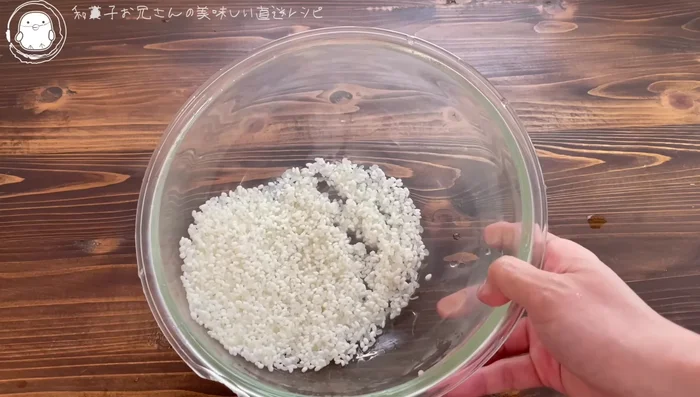Botamochi, a delightful Japanese rice cake, offers a surprisingly versatile canvas for culinary creativity. Traditionally made with sweet adzuki bean paste, this recipe unlocks the potential of botamochi by exploring three exciting variations: classic sweet bean, subtly savory black sesame, and a vibrant matcha green tea. Each variation uses the convenient and efficient method of a rice cooker, minimizing effort while maximizing flavor. Forget complicated techniques and lengthy processes – these recipes are designed for even the busiest home cook.
This simplified approach retains the soft, chewy texture that defines botamochi while offering a range of flavor profiles to tantalize your taste buds. Get ready to embark on a delicious journey, as we guide you through a step-by-step process for creating these three irresistible botamochi variations, perfect for a delightful afternoon snack or a unique dessert.
Tools Needed
Ingredients
- Mochi rice: 110g
- White rice: 40g
- Sugar: 15g
- Salt: a little bit
- Water: to the top of the rice cooker
- Red bean paste: null
- Kinako (roasted soybean flour): 25g
- Sugar for kinako: 5g
- Sesame seeds: 15g
- Sugar for sesame seeds: 10g
Step-by-Step Instructions
Step 1. Prepare and Cook the Rice
- Wash the mochi rice and white rice.
- Combine the rice, sugar, salt, and water in the rice cooker. Mix lightly.
- Cook the rice in the rice cooker using the normal cooking setting.



Step 2. Mash and Shape the Mochi
- Once cooked, mash the rice cakes together until well combined.
- Divide the mochi into 30g and 50g pieces.


Step 3. Create Red Bean Paste Botamochi
- For the red bean paste botamochi, wrap the 50g mochi pieces around the red bean paste.

Step 4. Create Kinako and Sesame Botamochi
- For the kinako and sesame botamochi, prepare the kinako mixture (kinako and sugar) and sesame seed mixture (sesame seeds and sugar).
- Wrap the 30g mochi pieces around the kinako or sesame filling.
- Roll the botamochi in the remaining kinako or sesame seed mixture.



Read more: Ochazuke Recipe: Easy Japanese Green Tea Rice Bowl
Tips
- Adding white rice helps the botamochi last longer and prevents it from hardening quickly.
- Adding sugar to the kinako makes it easier to swallow and smoother.
- Finely ground sesame seeds are recommended for a better texture.
Nutrition
- N/A
FAQs
1. Can I use a different type of rice for Botamochi?
While short-grain glutinous rice (also known as sweet rice or mochigome) is traditional and gives the best texture, other short-grain rice varieties might work, but the result may be less chewy.
2. How long can I store leftover Botamochi?
Store leftover Botamochi in an airtight container in the refrigerator for up to 3 days. They may become slightly firmer as they cool.
With these three easy variations, you've unlocked the delightful world of homemade botamochi. From the classic sweetness to the surprising savory and vibrant matcha notes, there's a perfect flavor for everyone. Enjoy the chewy texture and satisfying taste of your freshly made botamochi!
